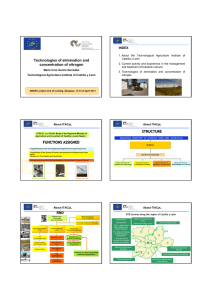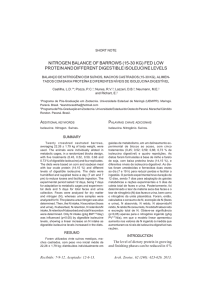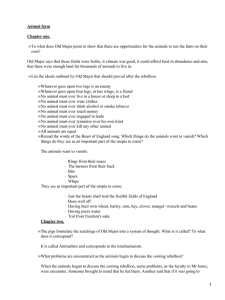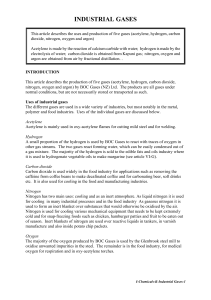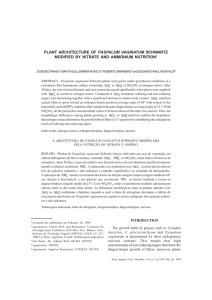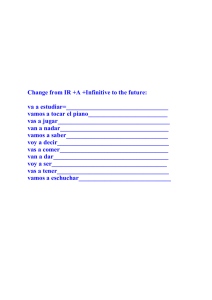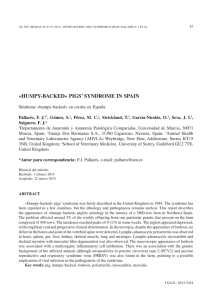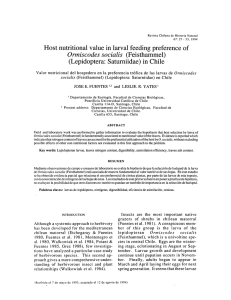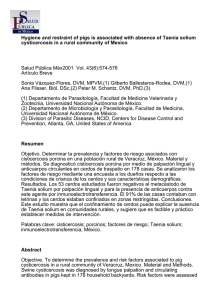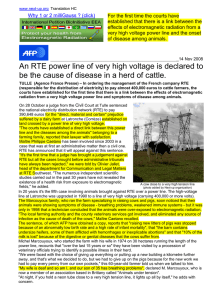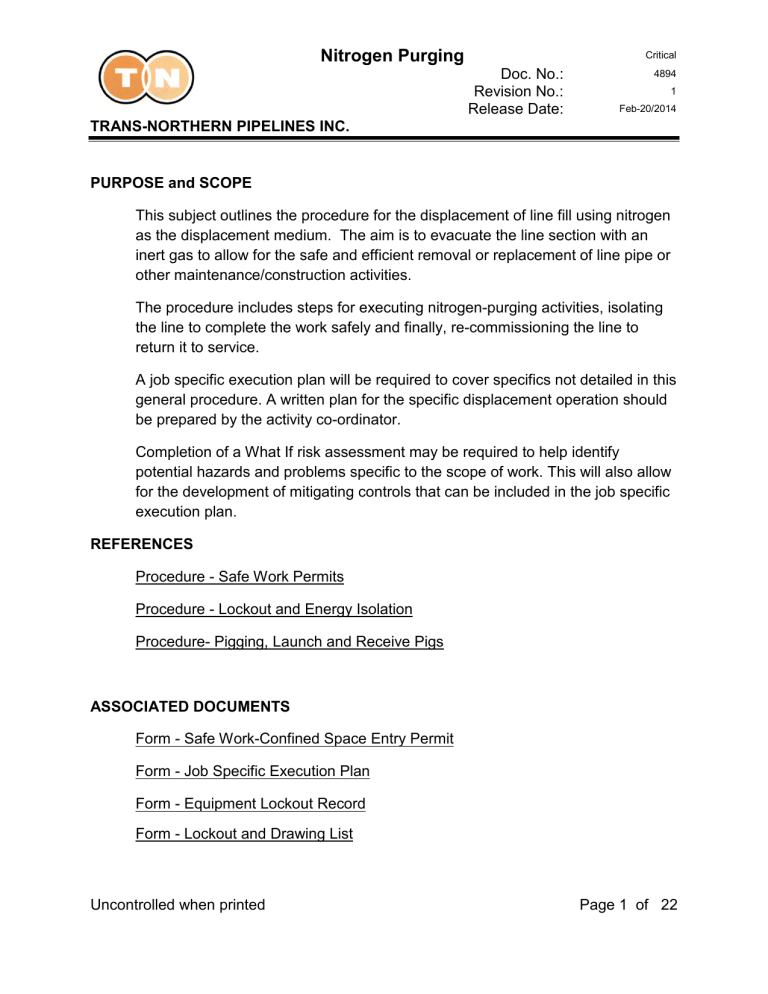
Nitrogen Purging Critical Doc. No.: Revision No.: Release Date: 4894 1 Feb-20/2014 TRANS-NORTHERN PIPELINES INC. PURPOSE and SCOPE This subject outlines the procedure for the displacement of line fill using nitrogen as the displacement medium. The aim is to evacuate the line section with an inert gas to allow for the safe and efficient removal or replacement of line pipe or other maintenance/construction activities. The procedure includes steps for executing nitrogen-purging activities, isolating the line to complete the work safely and finally, re-commissioning the line to return it to service. A job specific execution plan will be required to cover specifics not detailed in this general procedure. A written plan for the specific displacement operation should be prepared by the activity co-ordinator. Completion of a What If risk assessment may be required to help identify potential hazards and problems specific to the scope of work. This will also allow for the development of mitigating controls that can be included in the job specific execution plan. REFERENCES Procedure - Safe Work Permits Procedure - Lockout and Energy Isolation Procedure- Pigging, Launch and Receive Pigs ASSOCIATED DOCUMENTS Form - Safe Work-Confined Space Entry Permit Form - Job Specific Execution Plan Form - Equipment Lockout Record Form - Lockout and Drawing List Uncontrolled when printed Page 1 of 22 Nitrogen Purging Critical Doc. No.: Revision No.: Release Date: 4894 1 Feb-20/2014 TRANS-NORTHERN PIPELINES INC. DEFINITIONS Calculations Calculations that should be consider (but are not limited to) the following: 1. The volume of product to be displaced. 2. The pipeline profile to determine the maximum change in elevation over the displacement line section. 3. The specific gravity of the product to be displaced. 4. The volume of nitrogen to be used during the displacement (include a minimum 10% contingency factor). 5. Nitrogen injection pressures to be maintained. 6. Displacement rate and anticipated duration. 7. Minimum back pressures to be held at terminus, consideration being given to elevations along the pipeline. 8. Blowdown requirements and duration. Competent or Qualified An appointed, authorized or designated person who has knowledge and understanding, through experience and training on specific equipment that is sufficient to meet all job requirements as determined by the employer. Displacement Pigs Foam or high density wrapped polypigs are suitable for short line sections. Longer line sections require cupped polyethylene scrapers. Spheres are not suitable for nitrogen displacement. The downstream pigs, which form the seal between the nitrogen and the product being displaced should be over-sized in accordance with the manufacturer's specifications. This will minimize nitrogen/product blending ahead of the pigs. Some nitrogen bypass around displacement pigs is unavoidable. The amount of bypass can be minimized by choosing the most appropriate pig Uncontrolled when printed Page 2 of 22 Nitrogen Purging Critical Doc. No.: Revision No.: Release Date: 4894 1 Feb-20/2014 TRANS-NORTHERN PIPELINES INC. for the specific application. A minimum of two abutting pigs should be used. Excessive by-pass may create "air lock" ahead of the displacement pigs and significantly slow down the displacement rate. Special consideration should be given to the untrimmed internal flash on the longitudinal pipe weld when specifying displacement pigs. The flash will accelerate external pig surface wear. All pigs should be equipped with Electronic Tracking devices to enable tracking by technicians or other suitable devices such as Rattling devices. Order spare pigs. Written Plan or Job Specific Execution Plan A written plan for the specific displacement operation should be prepared by the activity co-ordinator. Refer to Form: Job Specific Execution Plan. A preliminary plan should be reviewed by all departments involved, including the nitrogen vendor. A revised plan should be issued and signed off by all parties prior to mobilizing the displacement operation. Strict adherence to the written plan is required in order to evaluate the prescribed procedures. Any deviation from the written plan should be approved by all parties before implementation. Such deviations, if approved, should be documented as a revision to the existing plan and given consideration when preparing future displacement plans. PROCEDURE DETAILS Hazards and Precautions: 1. Address Contingencies: i.e. a. Should the displacement pigs become lodged during the displacement operation, a new injection point may be required in order to continue the displacement. b. Similarly, alternative blow-down sites may be required to expedite venting and to relieve pressure locked in by line elevation changes. 2. Public Awareness: Uncontrolled when printed Page 3 of 22 Nitrogen Purging Critical Doc. No.: Revision No.: Release Date: 4894 1 Feb-20/2014 TRANS-NORTHERN PIPELINES INC. a. Obtain necessary access from adjacent landowners and acquire adequate work space b. Notify landowners and public authorities having jurisdiction in the affected areas of potential noise, blow down fumes and additional traffic. (Variance may be required for Municipal Noise By-Laws). 3. Acquisition of "specialty" materials and outside services may include, but are not be limited to, venting (blow-down) connections, separation tank, batching pigs and tracking devices. 4. Ensure that all piping and pressure relief devices are rated for the specific application. 5. Nitrogen interfaces should be delivered to the nearest downstream terminal. Pumping stations between the injection point and the terminus should be by-passed. 6. Daylight is preferred for displacement/ tracking, night shift is preferred for blow down activities, so that work may start early the next morning. This reduces public exposure to the activity and leaves daylight hours for tie-in activities. 7. Arrange to have a suitable tank available, into which the displaced nitrogen/liquid mixture may be safely diverted, taking into account the rapid expansion rate of nitrogen. Avoid tanks with floating roofs. 8. Ensure that thermometers, gauges and sampling apparatus are installed at appropriate locations. Meters may be required at the injection point for nitrogen and at the terminus for displaced product. Line Control monitors flow during displacement runs. 9. Existing scraper traps may require modifications to launch or receive the displacement pigs. 10. Use geophones to aid in tracking the pigs/scrapers. 11. Ensure that injection and blow-down sites can accommodate tankers and pumpers. 12. Ensure that all valves that must be operated during the procedure are manually controlled and that all valves through which a pig must pass unattended are locked "fully" open. Similarly, ensure that all valves that are to be closed during line displacement are locked closed. 13. Ensure all station by-pass valves are operational. Uncontrolled when printed Page 4 of 22 Nitrogen Purging Critical Doc. No.: Revision No.: Release Date: 4894 1 Feb-20/2014 TRANS-NORTHERN PIPELINES INC. 14. For blowdown sites where noise generation must be minimized, use Pulsco Silencer Vent Model BVS 18-4, c/w 2", 600#, RFSO flange for line connection. CAUTION: Weight of silencer vent is approximately 500 lbs. Silencer vent must be supported by skid deck when mounted on line. Silencer must also be free draining during use. Safety: 1. Nitrogen can cause rapid asphyxiation and death if released in confined, poorly vented areas. Readings should be taken periodically with a hazardous atmosphere detector capable of O2 readings. 2. Nitrogen as a compressed gas or liquid may cause severe frost bite to exposed flesh. Piping connecting the pumper to the injection manifold should be cordoned off with warning tape. 3. Nitrogen as a compressed gas expands rapidly when heated and may violently dislodge loose fittings. Ensure that all fittings are secured, whipchecks installed, before commencement of nitrogen injection. 4. The use of Nitrogen involves the hazard of released energy stored in compressed gas in the event of a breach of containment. Parts of mechanically assembled systems should not be adjusted while the system is under pressure. 5. The vendor's safety precautions and MSDS should be read and understood by all personnel involved in the injection and venting activities. These documents should be kept on site throughout the injection and venting activities. 6. Continuous oxygen deficiency monitoring is required at all blowdown locations. 7. The venting of heated nitrogen is accompanied by an extremely loud noise that may damage hearing. Hearing protection as specified by Canada Noise Control Regulations and CSA Z94.2-94 should be worn by all personnel on site. 8. Noise level readings should be taken periodically in order to ensure that personnel do not exceed exposure limits as specified in the Canada Noise Control Regulations. Uncontrolled when printed Page 5 of 22 Nitrogen Purging Critical Doc. No.: Revision No.: Release Date: 4894 1 Feb-20/2014 TRANS-NORTHERN PIPELINES INC. PROCEDURE: Nitrogen Purging can vary greatly depending on the scope of work and equipment being utilized. The following procedure therefore contains phrases such as: if required and if applicable in many of the steps. This procedure is intended to allow the user to follow the steps appropriate to the work being done. Each step should be considered and if applicable be followed as part of the procedure. The written Job Specific Execution Plan should outline any steps required for the purge that are not covered in this general procedure. Nitrogen Purging activities must be performed by competent and qualified persons, whether TNPI employees or contractors. Applicable Yes/No 1)_____ DETERMINE scope of work for purging operation. a. _____ ESTABLISH time frame for work. b. _____ INTERFACE with appropriate groups (i.e. Line Control, Contractors) to schedule timing. 2)_____ COMPLETE a Job Specific Execution Plan or Written Plan for scope of work. (Should be done well in advance of scheduled start date to allow for changes and acceptance) a. _____ ENSURE all required forms are completed (i.e. Request for Line Down Time, Lockout and Drawing List) b. _____ OBTAIN all required permits, agreements and approvals. c. _____ CONDUCT a site visit with appropriate people to review scope of work and understand specific job requirements. d. _____ REVIEW plan with appropriate people. e. _____ ENSURE plan is signed off by all appropriate people. 3)_____ STAKE and/or DAYLIGHT the line upstream of the injection point as required to allow for adequate warning that the batching pigs are approaching the injection point. 4)_____ STAKE and/or DAYLIGHT, If the terminus of the purge is located at a mainline station, upstream of the station if required to coordinate the shutdown/bypass of the station. 5)_____ INSTALL required vent fittings, PSV’s, piping for blowdown tanks and other required hardware as per written plan. Uncontrolled when printed Page 6 of 22 Responsible Person Nitrogen Purging Critical Doc. No.: Revision No.: Release Date: 4894 1 Feb-20/2014 TRANS-NORTHERN PIPELINES INC. a. _____ POSITION blowdown tanks/trucks at the specified location(s). (See typical valve and piping schematics prepared with the written plan.) 6)_____ INSTALL portable lighting plants as required at the injection and venting sites prior to connecting the pumper. 7)_____ CONFIRM the status of the communication link with Line Control before commencing nitrogen injection. 8)_____ CONFIRM operation of tracking transmitters and receivers before launching pigs. 9)_____ ENSURE proper pig separation as per calculations. a. _____ LINE SHUTDOWN may be required to provide time to load pigs. b. _____ ADDITIONAL pig separation may be required to allow for pig slippage during travel. 10)_____ LAUNCH pigs into a product batch from existing traps upstream of the injection point. (REFER TO PROCEDURE: Pigging, Launch and Receive Pigs) a. _____ VERIFY separation, for pigs launched upstream, at a predetermined location upstream of the nitrogen injection point. This location is based on mainline rate and corresponding pig travel speed. OR 11)_____ ALTERNATIVELY LAUNCH from a temporary trap installed at the injection point. (REFER TO PROCEDURE: Pigging, Launch and Receive Pigs) a. _____ VERIFY pig separation at predetermined location downstream of the launch site. 12)_____ MONITOR closely thereafter. a. _____ CONFIRM mainline rate with Line Control. At the same time: 13)_____ VERIFY: a. _____ Nitrogen pumpers are commencing cool-down period. b. _____ Commencement of a reduced rate if required. c. _____ Adequate separation between displacement and recommissioning pigs to permit closing of upstream isolation valve between the two. d. _____ Initiation of an open line of communication with Line Uncontrolled when printed Page 7 of 22 Nitrogen Purging Critical Doc. No.: Revision No.: Release Date: 4894 1 Feb-20/2014 TRANS-NORTHERN PIPELINES INC. Control. 14)_____ ADJUST line rate if required to allow for acceptable positioning of pigs. a. _____ GIVE special consideration, If a trap is terminus of nitrogen purge section: i.e.: i. reduction in line rate, ii. venting upstream iii. ensuring a back pressure cushion in the trap when receiving pigs. 15)_____ GIVE predetermined notification to the on-site personnel for final alert. NOTE: The location of the pigs/scrapers should be known at all times during the displacement operation. Should displacement pigs stop moving through the pipeline, it may be extremely difficult to locate and remove them. 16)_____ ENSURE All quick-action valves on the nitrogen injection piping are secured in the required (open/closed) position. 17)_____ ADVISE Line Control to commence shutdown of upstream booster when displacement pigs have reached the five-minute position upstream of the injection point. 18)_____ ADVISE Line Control, to close the upstream isolation valve and begin nitrogen injection, once the displacement pigs are confirmed to be past the injection point. a. _____ ADVISE downstream operations, upon confirmation, that nitrogen injection is on-line. 19)_____ MONITOR closely: a. _____ nitrogen rate, b. _____ nitrogen pressure, c. _____ downstream suction pressure d. _____ mainline displacement rate. 20)_____ CONTINUOUSLY MONITOR pressure at the nitrogen injection location to ensure that over-pressuring of the line does not occur. a. _____ MAKE every effort to maintain specified line rate and downstream suction pressure. Uncontrolled when printed Page 8 of 22 Nitrogen Purging Critical Doc. No.: Revision No.: Release Date: 4894 1 Feb-20/2014 TRANS-NORTHERN PIPELINES INC. 21)_____ CONTINUOUSLY TRACK the displacement pigs at critical locations: a. _____ MLV's, b. _____ Stations, c. _____ Tracking points. 22)_____ CLOSE VALVE and notify Line Control to shutdown downstream units immediately once displacement pigs pass downstream valve. a. _____ IF the downstream valve is located at a station, when the interface arrives at the sixty-minute location upstream of the station, the station is to operate on bypass to ensure nitrogen will not enter mainline units. b. _____ NOTIFY injection crew. c. _____ MAKE Alteration of station sequencing (software) as required. d. _____ CLOSE station bypass valve and shutdown line once displacement pig passes station e. _____ CLOSE required upstream and downstream valves to provide proper isolation. NOTES: The rate of injection must be slow enough to maintain control of the purging operation. Back pressure, held at the terminus, is the primary means of controlling purging rate. This rate should not exceed the meter capacity. The temperature of the nitrogen to be injected should be as close as practicable to existing ground temperature. Do not exceed MAOP pressure rating of the pipeline. 23)_____ BYPASS OR REMOVE, At an appropriate time before the nitrogen/liquid interface arrives, the meter from the stream and replaced with spools if required. 24)_____ DIVERT the stream to a suitable receiving tank upon arrival of the nitrogen/liquid interface. a. _____ The time required to receive the nitrogen/liquid interface will depend upon the viscosity and temperature of the mixture 25)_____ ENSURE the displacement pigs are constantly moving, if at all Uncontrolled when printed Page 9 of 22 Nitrogen Purging Critical Doc. No.: Revision No.: Release Date: 4894 1 Feb-20/2014 TRANS-NORTHERN PIPELINES INC. possible. a. _____ A steady decrease in the displacement rate may be indicative of pig bypass and "air lock". NOTE: Should the nitrogen supply be exhausted before the completion of the displacement, the movement of the pigs can continue at a slower rate while additional nitrogen is being obtained. The continuance of the displacement at the reduced rate may be possible due to the expansion of the nitrogen in the pipeline. In such cases, do not close the line section, as the increasing pressure may exceed the allowable maximum operating pressure of the line section. This increase may be severe if the temperature of the nitrogen originally injected was much lower than the product temperature. 26)_____ SECURE the purged line section by isolating the appropriate valves. ( REFER TO PROCEDURE: Lockout and Energy Isolation) a. _____ COMMENCE blowdown. (A nitrogen locked-in pressure range of 125-550 psig may be encountered and therefore blowdown may be lengthy and noisy.) b. _____ REGULATE the flow to control foaming and potential over-pressure. 27)_____ SET UP continuous oxygen monitoring as required at blowdown locations. 28)_____ MONITOR the rate of pressure decrease on blowdown. 29)_____ VENT nitrogen, but NOT directly to atmosphere if at all possible. a. _____ Where practical: Blowdown tanks should contain sorbent pads. b. _____ OPEN blowdown valves slightly to confirm product will not be expelled to atmosphere. c. _____ USE muffling devices as required. d. _____ CONSIDER using additional vents to expedite blowdown. 30)_____ CHECK the pipeline for LEL. LEL must be below 10 %. a. _____ CHECK LEL at both pig traps and other vents or drain valves that are available while venting to ensure a successful purge. 31)_____ INSTALL isolation blinds as required. ( Refer to Form: Lockout Uncontrolled when printed Page 10 of 22 Nitrogen Purging Critical Doc. No.: Revision No.: Release Date: 4894 1 Feb-20/2014 TRANS-NORTHERN PIPELINES INC. and Drawing List) 32)_____ IMPLEMENT the required work. Re-commissioning: 33)_____ INSPECT pipeline for completeness of scope of work. 34)_____ REMOVE all installed blinds and locks ( Refer to Form: Lockout and Drawing List) 35)_____ INFORM Line Control that the pipeline is being re-commissioned and will be returned to normal service. 36)_____ ENSURE that upstream valves are open prior to linefill start up. 37)_____ ENSURE downstream isolation valve remains closed in order to compress air between the displacement pigs. (This will provide backpressure for the introduction of product into the line.) 38)_____ LAUNCH re-commissioning pigs as required by written job plan with appropriate interfaces and spacing. (Nitrogen, Liquid product.) a. _____ REFER to procedure: Pigging; Launching and Receiving Pigs. b. _____ CONSIDER the line may require de-watering depending on scope of work completed. 39)_____ VENT air at the first practical downstream opportunity (MLV with traps, manifolds) to the displaced line section. a. _____ VENT into vacuum truck at specified location if appropriate. b. _____ AVOID venting into marketing terminal tanks. 40)_____ TRACK the displacement pigs at predetermined locations. 41)_____ SAMPLE for product/nitrogen interface, as linefill nears completion. 42)_____ CONTINUE VENTING into downstream blowdown tank until liquid appears. a. _____ This step may have to be repeated several times if excessive bypass has occurred. Uncontrolled when printed Page 11 of 22 Nitrogen Purging Critical Doc. No.: Revision No.: Release Date: 4894 1 Feb-20/2014 TRANS-NORTHERN PIPELINES INC. 43)_____ TRACK the displacement pigs to the downstream receiving trap. a. _____ Timing for appropriate station bypass must be previously arranged with Oil Movements and Field Services. b. _____ In the planning stages, consider the total length of the pigs vs. the length of the trap to allow for receiving all pigs at one time if possible. c. _____ It may be necessary to remove each pig from the trap as it comes in. 44)_____ MONITOR all locations including drains, vents and flanges for any signs of leakage. 45)_____ ADVISE downstream Terminals of potential nitrogen entrainment. 46)_____ PRESSURIZE worked on line section: a. _____ CHECK all work sites for leaks. b. _____ ARRANGE for appropriate testing. (HOLS test) 47)_____ NOTIFY Line Control when the pipeline has been re-filled and normal operations can resume. 48)_____ FORWARD all log sheets and other vital information to the assigned supervisor and project co-ordinator. a. _____ Logging of pressures and temperatures should be documented at predetermined points along the pipeline route as identified in the work plan. b. _____ Volume and flow rates should be recorded at the nitrogen injection point and the displacement terminus. c. _____ Individuals assigned to track and log the progress of pigs/scraper through the pipeline should do so in accordance with a reporting procedure suitable to the needs of the specific displacement operation. Uncontrolled when printed Page 12 of 22 Nitrogen Purging Critical Doc. No.: Revision No.: Release Date: 4894 1 Feb-20/2014 TRANS-NORTHERN PIPELINES INC. APPENDIX: Form: Job Specific Execution Plan Form - Equipment Lockout Record Form - Lockout and Drawing List Uncontrolled when printed Page 13 of 22 Nitrogen Purging Critical Doc. No.: Revision No.: Release Date: 4894 1 Feb-20/2014 TRANS-NORTHERN PIPELINES INC. Uncontrolled when printed Page 14 of 22 Nitrogen Purging Critical Doc. No.: Revision No.: Release Date: 4894 1 Feb-20/2014 TRANS-NORTHERN PIPELINES INC. Uncontrolled when printed Page 15 of 22 Nitrogen Purging Critical Doc. No.: Revision No.: Release Date: 4894 1 Feb-20/2014 TRANS-NORTHERN PIPELINES INC. Uncontrolled when printed Page 16 of 22 Nitrogen Purging Critical Doc. No.: Revision No.: Release Date: 4894 1 Feb-20/2014 TRANS-NORTHERN PIPELINES INC. Uncontrolled when printed Page 17 of 22 Nitrogen Purging Critical Doc. No.: Revision No.: Release Date: 4894 1 Feb-20/2014 TRANS-NORTHERN PIPELINES INC. Uncontrolled when printed Page 18 of 22 Nitrogen Purging Critical Doc. No.: Revision No.: Release Date: 4894 1 Feb-20/2014 TRANS-NORTHERN PIPELINES INC. Uncontrolled when printed Page 19 of 22 Nitrogen Purging Critical Doc. No.: Revision No.: Release Date: 4894 1 Feb-20/2014 TRANS-NORTHERN PIPELINES INC. Uncontrolled when printed Page 20 of 22 Nitrogen Purging Critical Doc. No.: Revision No.: Release Date: 4894 1 Feb-20/2014 TRANS-NORTHERN PIPELINES INC. Uncontrolled when printed Page 21 of 22 Nitrogen Purging Critical Doc. No.: Revision No.: Release Date: 4894 1 Feb-20/2014 TRANS-NORTHERN PIPELINES INC. Uncontrolled when printed Page 22 of 22
